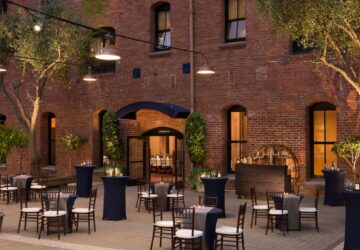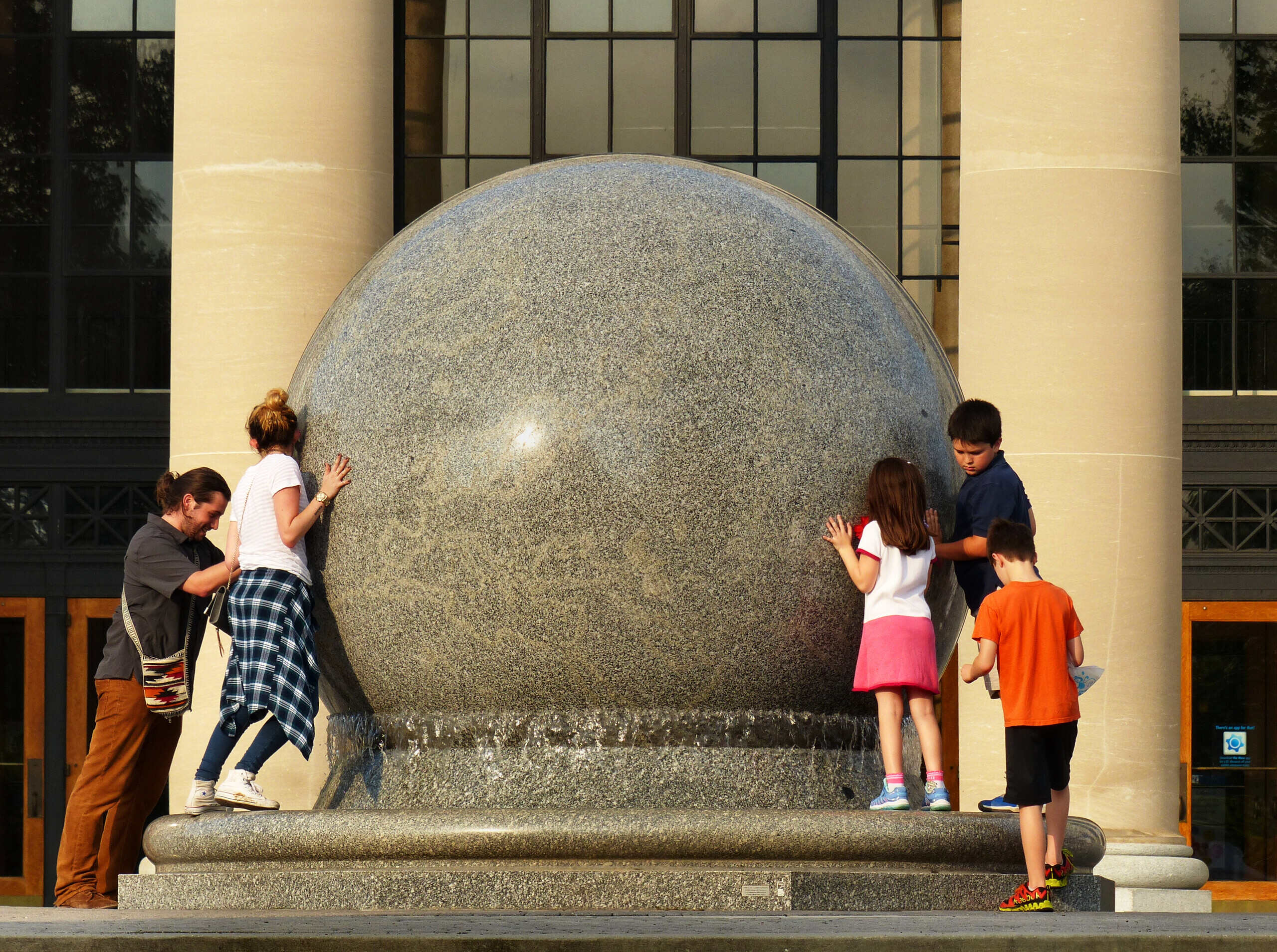There’s something about Virginia that just makes you feel at home. Maybe it’s the Southern hospitality or the beautiful scenery. Whatever it is, there are some hidden gems in this state that you won’t want to miss.
From charming small towns to amazing outdoor attractions, Virginia has something for everyone. In this blog post, we will explore some of the best-kept secrets in Virginia!
1. Abandoned Virginia Renaissance Faire, Fredericksburg
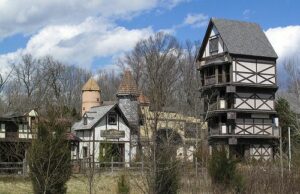
This hidden gem is perfect for those who love history and adventure. The Virginia Renaissance Faire was once a popular attraction, but it has since been abandoned. However, that doesn’t mean that it’s not worth exploring!
The first Faire, which was only in existence from 1996 to 1999, permitted fathers to behave like bards without fear of ridicule. The Faire was put up in the middle of nowhere, cutting it off from the rest of the world, which either didn’t understand or didn’t enjoy the plays.
The faire is located in Fredericksburg, VA. It is full of fascinating history. If you’re looking for a unique adventure, this is the place for you.
2. The Raven Room, Charlottesville
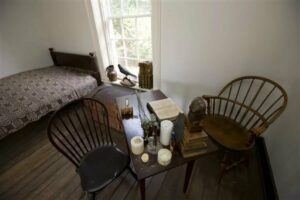
If you’re a fan of Edgar Allan Poe, then you’ll love the Raven Room in Charlottesville. This hidden gem is a bar that is themed after the famous author. From the decorations to the menu, everything in this bar is inspired by Poe’s work.
In 1826, Edgar Allan Poe, a well-known American writer, editor, and critic, spent a year at the University of Virginia. Despite the fact that he only studied and lived at the university for a year, his dorm is a shrine devoted to his legacy, which is conserved and maintained by a select number of students who are inspired by the author’s life and work.
The Raven Room, today is known as the portentously numbered dorm 13, was initially repaired in 1924 to fit the Poe-era condition. While the Raven Room was founded by an architectural professor who was a prominent member of the élite Raven Group, it is presently conserved by a society that was founded in 1904.
3. The Great Stalacpipe Organ, Luray
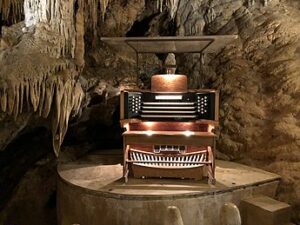
The Great Stalacpipe Organ, built in 1954 by mathematician and electronic scientist Leland Sprinkle, may appear to be simply another electrically operated lithophone, but the one hidden silently in the caves of Luray is the world’s biggest musical instrument of any sort!
Unlike a traditional organ, the Great Stalacpipe Organ was built by cutting stalactites of all shapes and sizes to provide the ideal tones. Every stalactite in the organ is connected to a mallet that is actuated by hitting the keyboard’s associated key.
The most fascinating feature is that the organ’s stalactites cover 3.5 acres, and because of the caves’ contained structure, the music can be heard throughout the tunnels. The full range of the instrument is two octaves, from A♭ to G, but it can also play quarter tones.
4. Bunny Man Bridge, Fairfax Station
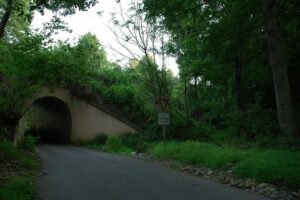
Bunny Man Bridge is a legend that has been passed down for generations. The story goes that a man dressed in a bunny costume would haunt the bridge and attack people with an ax. There have been many sightings of the Bunny Man, but no one knows for sure if he is real or just a myth.
On a moonlight night, the Colchester Overpass, a simple one-lane concrete tunnel in Clifton, Virginia, might appear frightening, so it’s no surprise that it’s spawned macabre folklore about the spirit of an ax murderer known as “The Bunny Man.”
The Bunny Man Bridge, as it is now called, has become a popular haunt for teens and the superstitious to give themselves a shock. According to folklore, a bus carrying prisoners from a local mad institute crashed, unleashing the deranged criminals. Two people managed to escape, despite the fact that the majority of them were discovered dead or recovered. For a while, at least. The body of one of the convicts was discovered hanging from the Colchester Overpass not long after the crash, and according to some accounts, it was accompanied by a note signed “The Bunny Man.”
The search for the second convict continued, and a number of half-eaten rabbits were discovered hanging in the area’s trees. The killer was finally apprehended, but he was struck by a passing train before he could be captured.

Of course, there was no mental asylum in the neighborhood, but the legend has survived. In the 1970s, there were tales of a mad guy dressed in white clothing that was alternatively characterized as a rabbit costume and/or a Ku Klux Clan robe harassing and threatening anybody who trespassed on his land. Although no one was ever charged with the attacks, this is most likely the genuine origin of the Bunny Man legends.
The legend of the Bunny Man has survived to this day, and it is now stated that if one goes through the tunnel at midnight on Halloween, the hatchet-wielding killer will materialize and hang such daring invaders from the bridge.
5. Foamhenge, Centreville
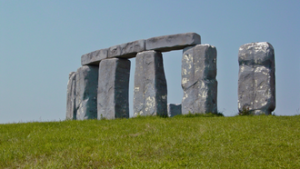
Foamhenge is a full-size replica of England’s Stonehenge made out of styrofoam. It was built in 2004 by artist Mark Cline as a temporary exhibit but has since become a permanent fixture in the Virginia landscape.
The Foamhenge is located on a hill in Centreville, Virginia, and is viewable from the road. It is open to the public 24 hours a day, 365 days a year, and there is no admission fee.
The structure is made out of styrofoam blocks that are 18 feet long, weighing a total of 22 tons. The blocks were cut with a hot wire and then assembled on site. The replica is an exact copy of Stonehenge, except for the fact that it is made out of foam.
Foamhenge was originally built as a temporary exhibit, but it has since become a permanent fixture in the Virginia landscape. It is open to the public 24 hours a day.
6. Crozet Tunnel, Afton
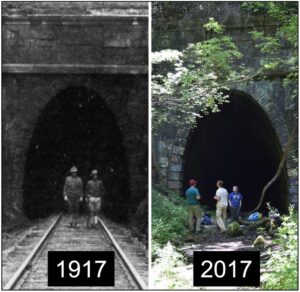
The Blue Ridge Tunnel was renamed Crozet Tunnel after the principal engineer, Claudius Crozet, a French-born engineer who fought in Napoleon’s army before migrating to the United States. The tunnel was built to link to the Shenandoah Valley and travel through the Blue Ridge Mountains.
Crozet was contracted to work on the Blue Ridge Mountain railroad project, which included the construction of four tunnels, the longest and most difficult of which was the final.
The Tunnel, which was finished in 1858 and was the only one of its sort in the country at the time, is 4,273 feet long. The route was utilized until 1944 when it was replaced by the Blue Ridge Tunnel, which was built parallel to it.
7. Kiptopeke’s Concrete Fleet, Cape Charles
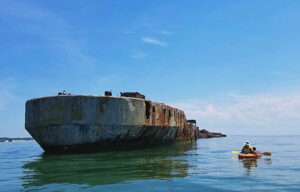
Kiptopeke State Park is home to an unusual sight: a fleet of concrete ships that were once part of World War II’s merchant marine. The ships were built in the early 1940s as part of the war effort and were used to transport cargo across the Atlantic Ocean. After the war, they were brought to Kiptopeke and sunk to create an artificial reef.
The fleet consists of eight ships: the SS Exford, SS John W. Brown, SS Quaker City, SS Black Diamond, SS Green Mountain State, SS Empire State, SS Keystone State, and SS Lake Champlain. The ships are all different sizes and were built by different companies. They were sunk in different years, with the first ship being sunk in 1956 and the last ship being sunk in 1965.
The ships are now home to a variety of marine life, and they are a popular spot for scuba diving and fishing. Visitors can also take a self-guided tour of the ships.
8. Hollywood Cemetery, Richmond

Hollywood Cemetery in Richmond, Virginia is the last resting place of two United States presidents. Presidents John Tyler and James Monroe, one Confederate President, Jefferson Davis, 18,000 Confederate soldiers recorded on a 90-foot stone memorial, and Richmond’s own VAMPIRE – W.W. Pool.
This cemetery was established in 1849 on land that was once part of a plantation owned by the Harrison family. The Harrisons were one of the first families to settle in Virginia, and their plantation was called “Hollywood.”
The name “Hollywood” is thought to come from the holly trees that grew on the property. The cemetery was originally intended to be a private burial ground for the Harrison family, but it was opened to the public in 1869.
It is has a variety of interesting monuments and sculptures. One of the most notable is the Confederate Memorial, which was erected in 1869. The memorial is 90 feet tall and is made out of granite from Georgia. It is the tallest monument in the cemetery and is visible from many parts of Richmond.
The cemetery is also home to the Hollywood Mausoleum, which was built in 1869. The mausoleum contains the remains of more than 400 people, including four presidents of the Confederate States of America.
9. The Grand Kugel, Richmond
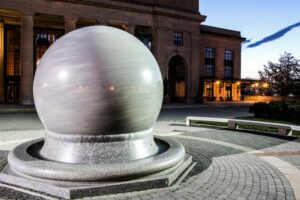
The Grand Kugel is a 16-foot-tall, 500-pound steel and concrete sculpture that was installed in Richmond’s Byrd Park in 2013. The sculpture was created by artist Bob Perrine and is based on a design by architect James Wines.
This sculpture is made up of two parts: a large sphere that rests on a smaller sphere. The spheres are connected by a series of steel beams that form a spiral staircase inside the sculpture. Visitors can climb the stairs to the top of the sculpture, where they will find a viewing platform that offers views of Byrd Park and the James River.
The Grand Kugel is one of several sculptures installed in Byrd Park as part of the park’s “Art in the Park” program. The program was launched in 2012 and is designed to bring public art to the park.
10. The Witch of Pungo Statue, Virginia Beach

Grace Sherwood, Virginia’s last known witch, has a monument dedicated to her.
Sherwood, who was born about 1660 and went by the name Grace White before marrying James Sherwood, was accused of witchcraft in 1698 by her neighbors, who said she cast a death hex on their pigs and cotton. Grace reportedly rode her neighbor and exited via a keyhole or a break in the door.
Grace continued to fight the neighbors after James died, and she prevailed. Grace was accused of witchcraft for the first time in 1706, when she was accused of putting a spell on Elizabeth Hill that caused her to miscarry twice. She was subjected to a ‘trial by water,’ in which she would be found innocent if she sunk, but prosecuted if she did not. She seemed to float!
She was imprisoned for a time, but she was released in 1740. Grace Sherwood was granted an informal pardon by Governor Tim Kaine in 2006, 300 years after the ‘trial by water’ occurred.
These are just a few of the hidden gems in Virginia that are worth exploring. From historical sites to natural wonders, there is something for everyone to enjoy in Virginia. So get out there and start exploring! Who knows what you might find.
Featured Image Credit: Kipp Teague/Flickr



